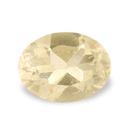|
|
|
|
Click on a letter above to view the list of gems. |
|
|
|
|
|
Pollucite |
|
| Chemistry:
(Cs,Na)2(Al2Si4)O12
• H2O | |
| Discovered
in 1846;
IMA
status: Valid (pre-IMA; Grandfathered). | ||
|
| ||
|
Classification |
|
|
| |
|
Silicates | |
|
|
8 : Silicates |
|
|
|
|
Crystal Data |
|
|
|
|
|
Crystals are rare; cubes, dodecahedra, or trapezohedra, commonly striated, up to 12 cm; as rounded grains, fine-grained, massive. |
|
|
None |
|
|
|
|
|
Physical Properties |
|
|
|
|
|
None |
|
|
Uneven to Conchoidal |
|
|
Brittle |
|
|
6.5 - 7.0 |
|
|
2.68 - 3.03 (g/cm3) |
|
|
Fluorescent; SW UV = cream white, blue green, LW UV = weak orange |
|
|
Barely Detectable, GRapi = 484.85 (Gamma Ray American Petroleum Institute Units) |
|
|
|
|
|
Optical Properties |
|
|
|
|
|
Colorless, White, Gray, Pale Pink, Violet, Blue |
|
|
Transparent to Translucent |
|
|
Vitreous to Dull |
|
|
1.507 - 1.525 Isotropic |
|
|
0.00 Isotropic |
|
|
0.012 |
|
|
None |
|
|
|
|
|
Occurances |
|
|
|
|
|
Geological Setting: |
In lithium-rich granite pegmatites; may be in kiloton amounts. |
|
Type Locality: |
La Speranza (Pisani's Quarry), San Piero in Campo, Campo nell'Elba, Elba Island, Livorno Province, Tuscany, Italy |
|
Year Discovered: |
1846 |
|
View mineral photos: | |
|
|
|
|
More Information |
|
|
|
|
|
| |
|
|
|
|
|
|
|
We
have not photographed our Pollucite gems yet. Please
check back soon! |
